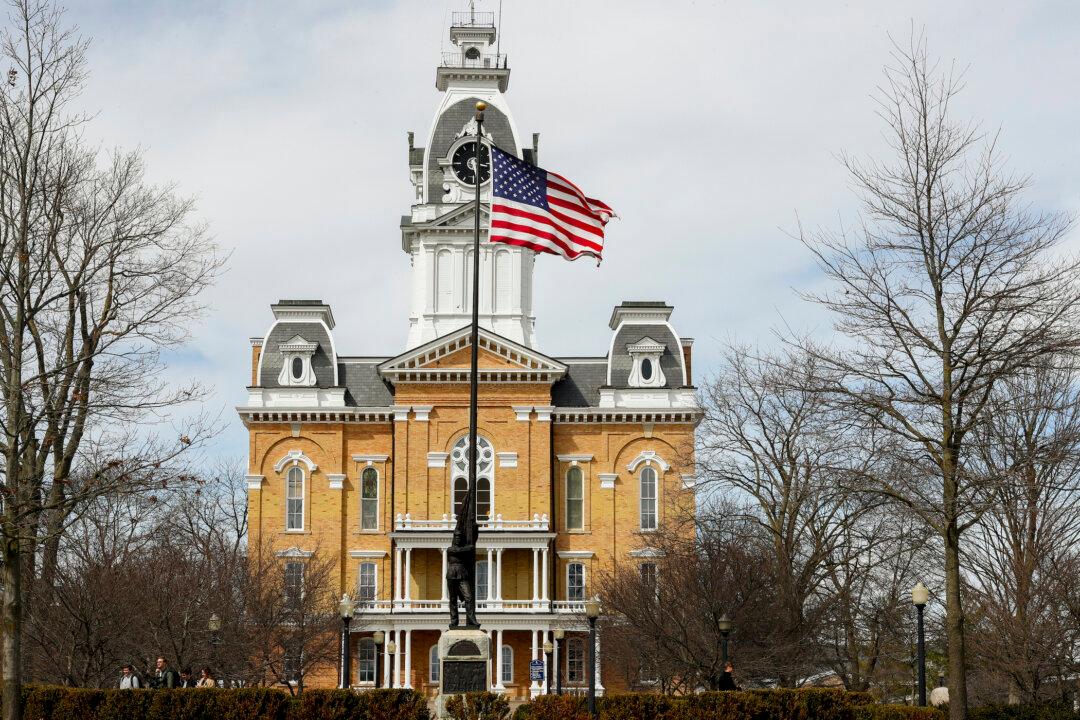Commentary
My college career started in September 1973 at the University of Michigan, 15 miles from my home in Wayne, Mich. I didn’t like the school. It was way too big and impersonal. And its leftist milieu grated against my conservative conscience.
The campus
protests struck often from 1965 to 1972, but ended after President Nixon pulled all U.S. troops out of Vietnam earlier that year and ended the draft. But a pall of tear gas still hung over the UM Diag, politically if not aromatically. The year prior, the student government forced racially based affirmative action on the school—on the classes coming after them, so they weren’t affected themselves.
Providentially, in the spring of 1975 I read a story in the Detroit News about
Hillsdale College, 90 miles west of Wayne. It’s a small Christian liberal arts school dedicated to teaching “character, faith, and freedom,” including free-market economics. My great parents and I took a trip out there for a tour. We loved the place.
I asked about campus protests, which I hated. One of the officials told me Hillsdale never had protests because it was a private college, not public, and told the students any protesters would be expelled immediately.
I applied, was accepted, and transferred that fall. There, I took classes by Russell Kirk, the dean of American conservatism, author of the monumental “
The Conservative Mind,” and soon my mentor and friend. See The Epoch Times’s
profile, “Russell Kirk: Founder of Modern Conservatism.”
It was a paradise for a young conservative. I’m proud to say Hillsdale continues its tradition of passing on positive traditions and has not taken up wokeness and other nonsense.
Private Means Private
I bring this up because there is a distinction, today as well, between public and private schools. Public schools, such as UCLA and the University of Virginia, have to allow some degree of protests by students because they are public property. It’s like protesting in front of City Hall or the U.S. Congress. The
First Amendment “right of the people peaceably to assemble” is in operation.
The operative word is “peaceably.” The violence striking UCLA and other schools this week cannot be tolerated no matter what.
But private schools are different, because they are on private property. That’s why Columbia University President Nemat Shafik,
reported the New York Times May 1, “expressed regret about calling in the police to clear a previous protest. On Tuesday, she said she had ‘no choice’ after protesters occupied a building on campus.”
Columbia also
said it would expel the students. Although who knows if that will stick? But as a private school, it does have the right to do so.
I couldn’t find any stories on UCLA expelling students. Except for those committing violence, it may find it hard to do so as a public entity, instead of a private one. We’ll also see about that.
But Are Private Schools Really Private?
The question also rises: Are USC, Columbia, and other private schools really private? After all, they receive millions of U.S. and state taxpayer dollars every year. Not to mention, many students attend on Pell Grants, the G.I. Bill, and other government scholarships and loans.Hillsdale was involved in just that controversy while I was there. The school took no direct federal money. But the federal government under President Jimmy Carter insisted it really was a government school because it took in students who received government loans and the G.I. Bill. Therefore it had to comply with
Title IX requirements, specifically on women students’ sports.
Military veterans at Hillsdale recently had fought for freedom for South Vietnam, which unfortunately had fallen to communist North Vietnam in April 1975. A couple were my friends. They didn’t like that the U.S. government, having abandoned our allies in Saigon fighting communism, now considered them its charges, instead of free students.
Hillsdale said the loans and the G.I. Bill benefits belonged to the students, not the school. And that it did not discriminate against its women students, but had many sports programs for them. It just didn’t want to be bossed around by a dictatorial federal government.
Hillsdale still
points out that, since its founding in 1844, it has “refused to discriminate based upon race, religion, or sex.” It matriculated black and women students from Day One. So it needed no lectures from an intrusive federal bureaucracy.
Current President
Larry P. Arnn, who earlier was the president of the Claremont Institute in California, also likes to point out Hillsdale, proportionally, sent more students to become officers to fight in the Union Army against slavery than did Harvard.
The legal matter at issue was decided by the U.S. Supreme Court in
Grove City v. Bell in 1984. Like Hillsdale, Grove City is an independent school that didn’t take any federal tax dollars, but did take students with government loans and the G.I. Bill. Unfortunately, the court decided against Grove City, and therefore against Hillsdale.
Hillsdale then set up its own, special fund to pay for the schooling of any student denied a scholarship by the federal government.
Ironically, now it’s the Biden Administration that’s using federal law to abuse women students! As the Lion
headlined April 29, “Florida, Texas, 3 other states reject Biden’s ‘illegal and unconstitutional’ Title IX rewrite they say undermines women’s rights.”
Solution: Privatize All Colleges and Universities
The solution to both this new Title IX mess and the problem of student protests is to follow the example of Hillsdale and Grove City and make all schools completely private. UCLA and the other UC campuses, the Cal State System, and the California Community Colleges could all be converted into private entities.
And instead of students depending on politicized scholarships, grants, and loans, private scholarship funds would spring up, as one did for Hillsdale’s students, to aid the young scholars. That also could be a way to end the horrible student-loan crisis, with a staggering $1.77 trillion now
owed by those just starting out their lives.
Further, the fact is a lot of students would be better off skipping college and the loan pileup and instead getting technical training and going straight into the private sector.
Two schools
claim they’re the oldest publicly run universities in the United States: The University of North Carolina at Chapel Hill, the first to hold classes and graduate students, and the University of Georgia, the first with a public charter. It’s a dubious claim.
It would have been far better if they had been started as private schools, as Harvard, Yale, Columbia, and others had been before them. Of course, there’s no way the people of 200 years ago could have anticipated wokeness, P.C., ESG, DEI, and the other academic distortions.
When I graduated from Hillsdale in 1977, it was barely known in conservative circles, and I had to tell others what it was. Since then, I’ve been surprised but pleased how well-known it’s become, especially for its emphasis on free markets and classical culture. This hunger for what Kirk always called “the
permanent things” also is shown by my favorite Epoch Times section,
Arts & Culture.
In these difficult times on college and university campuses, Hillsdale and its totally private foundation ought to be the model for all colleges and universities.
Views expressed in this article are opinions of the author and do not necessarily reflect the views of The Epoch Times.







